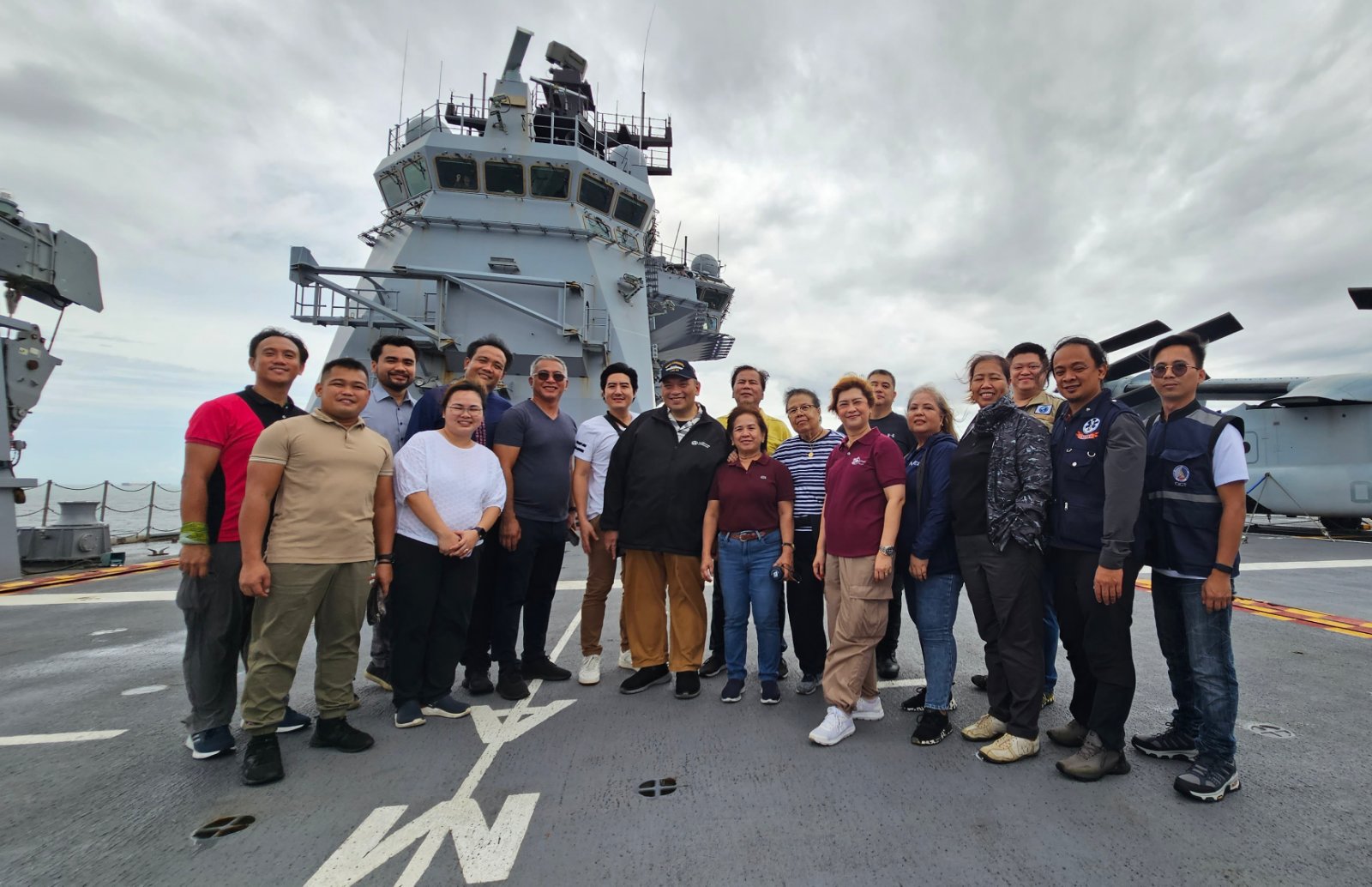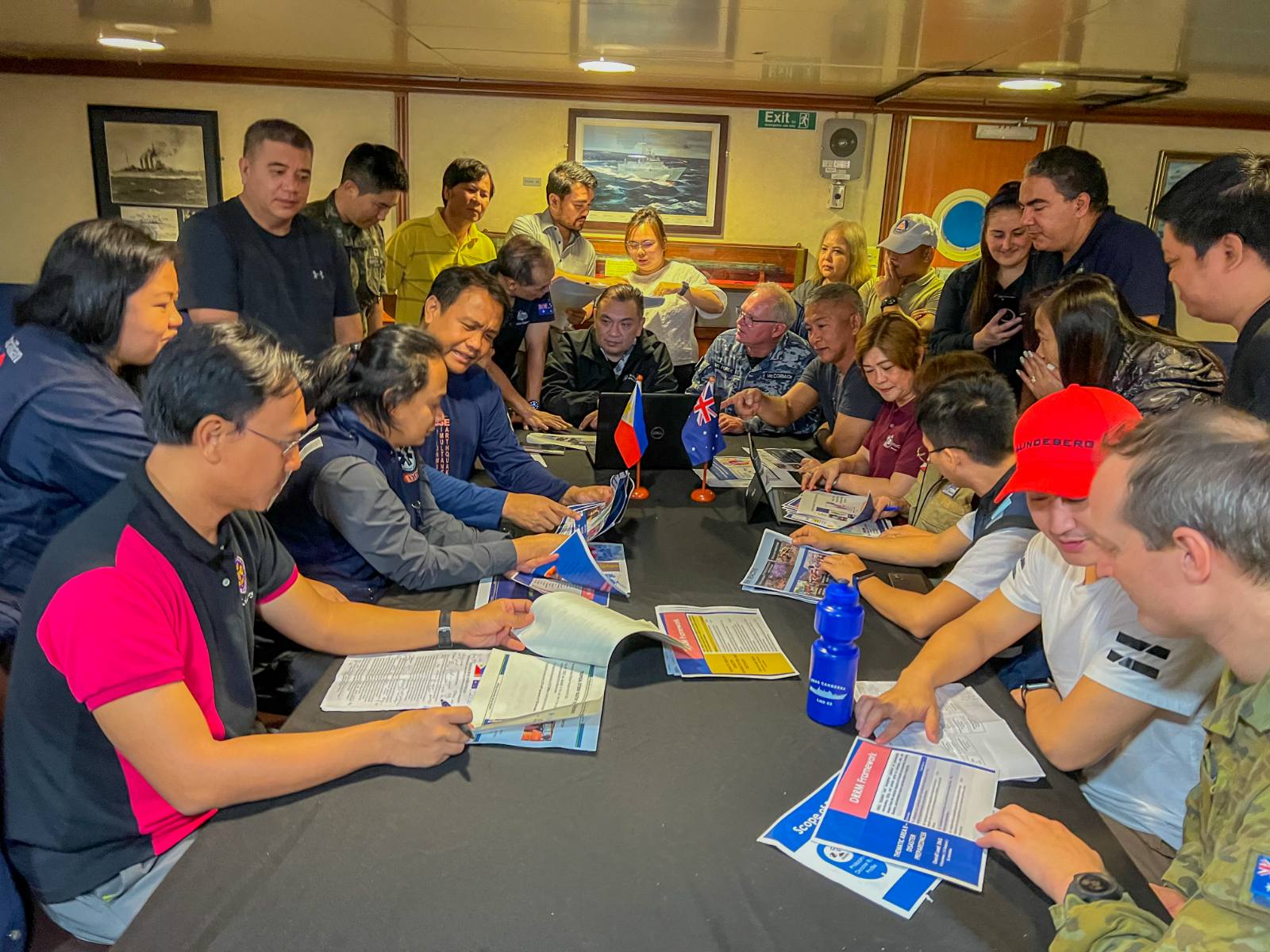
A humanitarian assistance and disaster relief (HADR) exercise in preparation for the “Big One”, or a massive earthquake that could significantly affect millions of Filipinos, was conducted by the Philippines and Australia recently, the Office of Civil Defense (OCD) said on Saturday, Sept. 30.
Civilian and military experts from the Philippines and Australia played out emergency situations in a tabletop exercise designed to “increase the understanding of the Philippines’ disaster management systems and its readiness to accept international response.”
The exercise was organized by the Australian Embassy in partnership with the National Disaster Risk Reduction and Management Council (NDRRMC), and was held onboard HMAS Canberra, one of Australia’s largest ships, last Sept. 27.
The table-top exercise was led by Thanh Le, Australian Embassy’s Development Counsellor and expert in humanitarian assistance, who also led Australia’s response to the Philippines when Super Typhoon Yolanda (international name: Haiyan) struck in 2013.
“Activities like this allow the Australian Government to think through, ‘What support could Australia provide the Philippines in response to this kind of disaster? How much time would it take to launch an amphibious response? What resources would we need?’ It also allows our partners in the Philippine government to consider how best to coordinate and receive Australia’s assistance,” Le said.
Meanwhile, Department of Foreign Affairs (DFA) Undersecretary Jesus “Gary” Domingo laid down the policies on calling for and accepting International Humanitarian Assistance in the Philippines while drawing on the lessons learned from Super Typhoon Yolanda.
“It’s a privilege for members of the NDRRMC to undertake a visit and tour of HMAS Canberra. It is reassuring to see first-hand the air and sea capabilities on board that can be available to the Philippines should we ever need it. It is a testament of an enduring friendship and spirit of bayanihan between Australia and the Philippines that we have already witnessed in the aftermath of Typhoon Yolanda ten years ago,” Domingo said.

During the workshop, HADR experts from both countries worked through the scenario of a 7.2-magnitude earthquake as they explored how the country’s emergency response will kick in and how Australia can support the Philippines, said OCD External and Media Relations officer Mark Timbal.
“The unique HADR onboard workshop also allowed Philippine emergency planners to see Australia’s navy assets that can deliver massive relief and recovery operations following a major emergency,” Timbal noted.
Onboard HMAS Canberra, Captain Philippa Hay, commander of Amphibious Task Force Indo-Pacific Endeavour 2023 (IPE23), provided an overview of the HADR capabilities of the Australian Defence Force.
“Australia stands ready to assist you,” he said.
HMAS Canberra is an amphibious vessel that can carry thousands of personnel, four landing crafts, and up to 18 helicopters. It can deliver relief supplies and coordinate complex HADR operations from the sea.
Hay was joined by Air Commodore Tony McCormack, commander of IPE23 who led the response to the Japan earthquake and tsunami as Commander of the General Headquarters United Nations command; and Lieutenant Colonel Andrew Glover, who alongside the ADF personnel on board, brought their experience from recent relief efforts in the region.
Meanwhile, other members of the NDRRMC that took part in the tabletop exercise include representatives from the Armed Forces of the Philippines (AFP), OCD, Philippine National Police (PNP), the Department of Finance (DOF), Department of Health (DOH), Department of Human Settlements and Urban Development (DHSUD), Department of the Interior and Local Government (DILG), Department of Social Welfare and Development (DSWD), and Department of Information and Communications Technology (DICT).
Timbal said that the Australian Government has provided emergency assistance, as well as long-term development investment to build community resilience in support of Philippine priorities for several years already.
Since 2006, Timbal said that Australia has invested P1.2 billion in various development programs to build community resilience, on top of the P4.4 billion aid in various humanitarian responses.
Currently, Strengthening Institutions and Empowering Localities against Disasters and Climate Change (SHIELD) Programme is Australia’s flagship resilience initiative in the Philippines. It aims to further strengthen local government capacities by working closely with provincial and municipal governments towards a safer and more resilient communities.